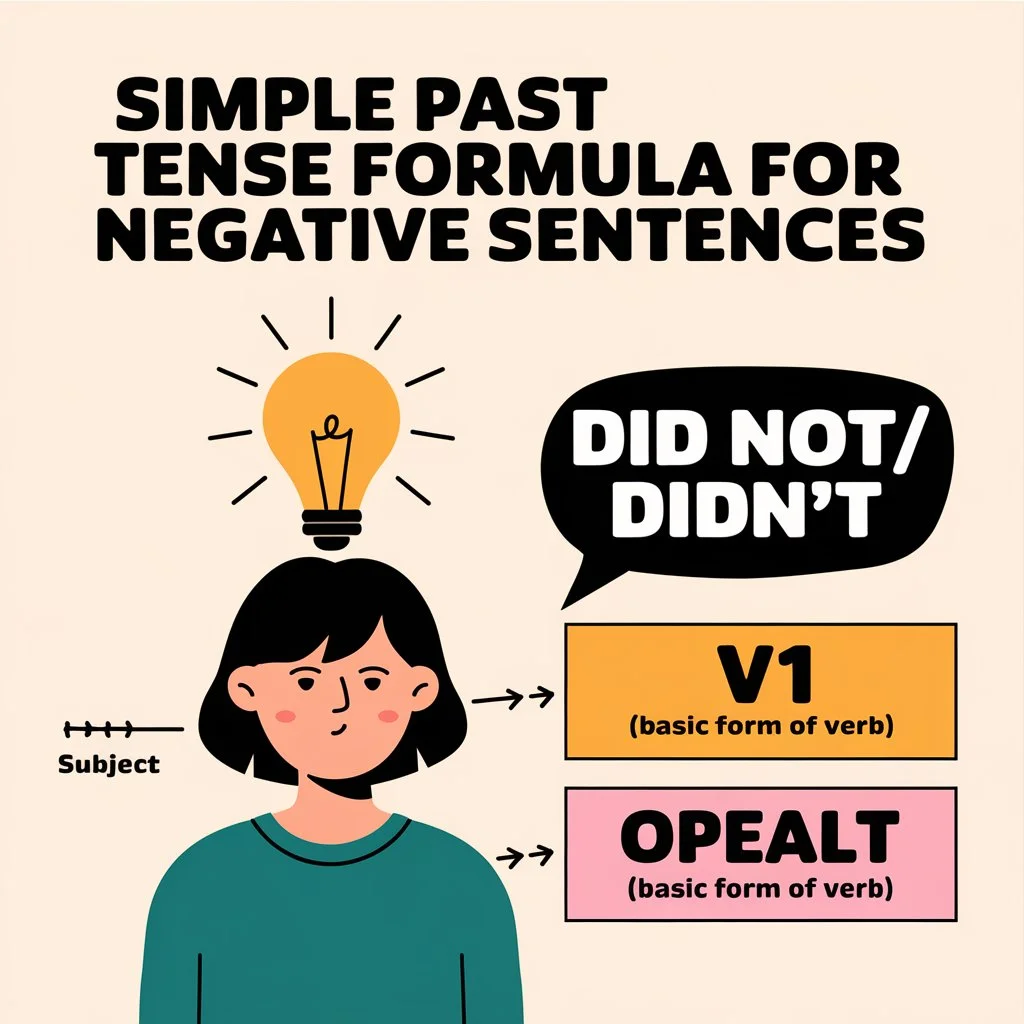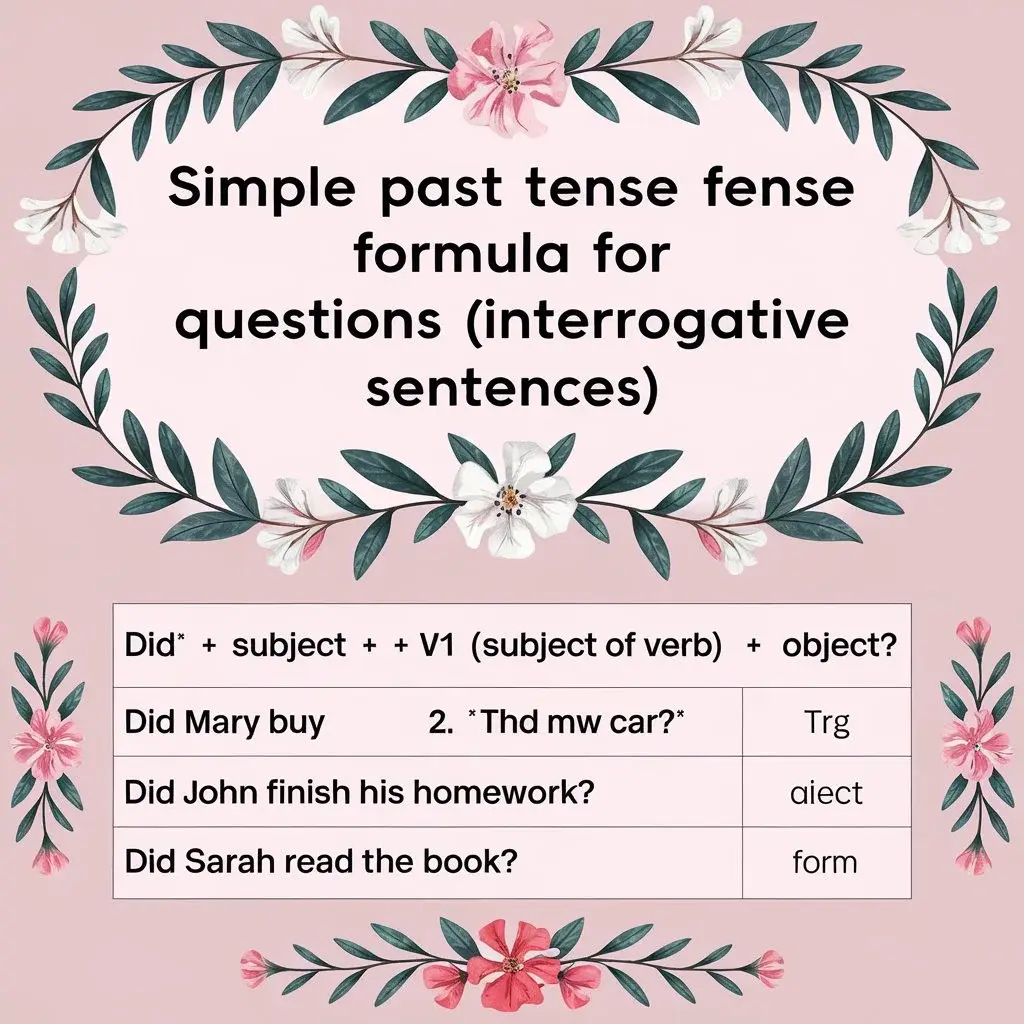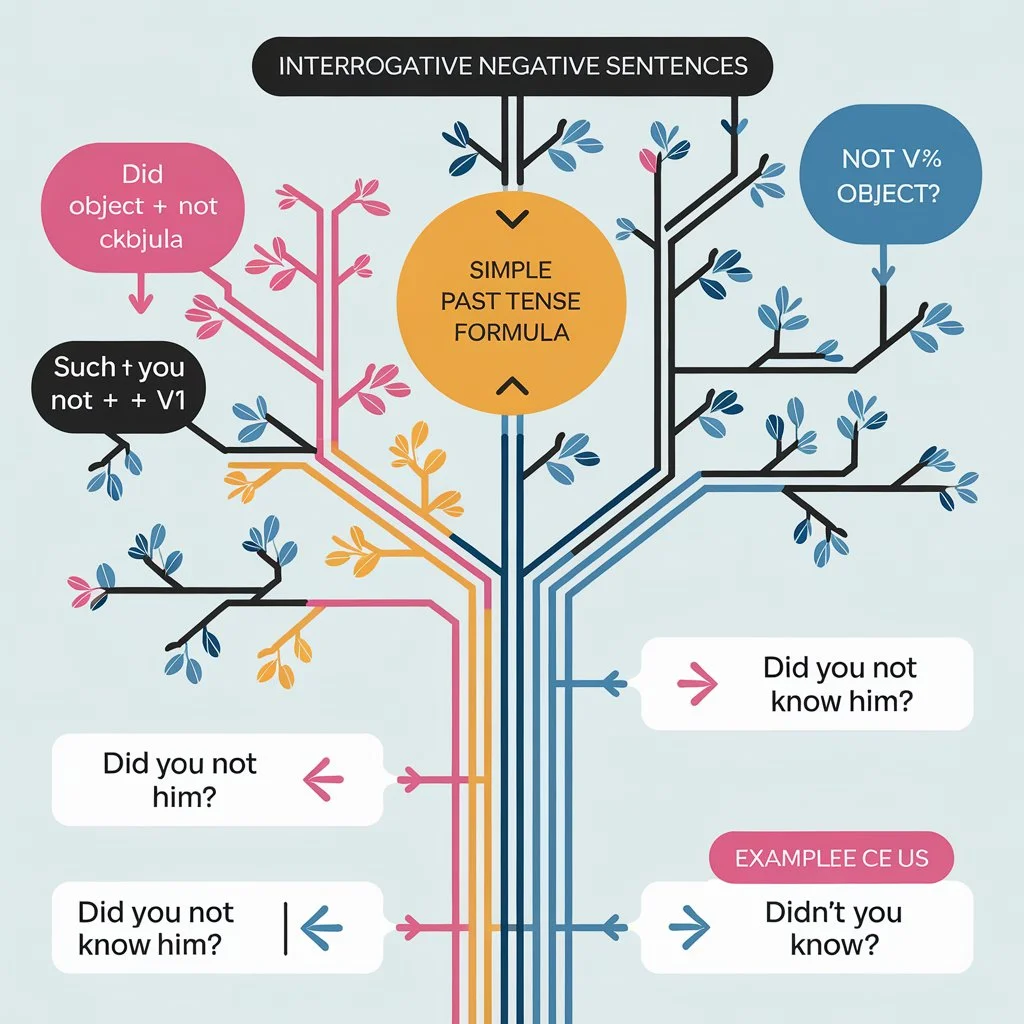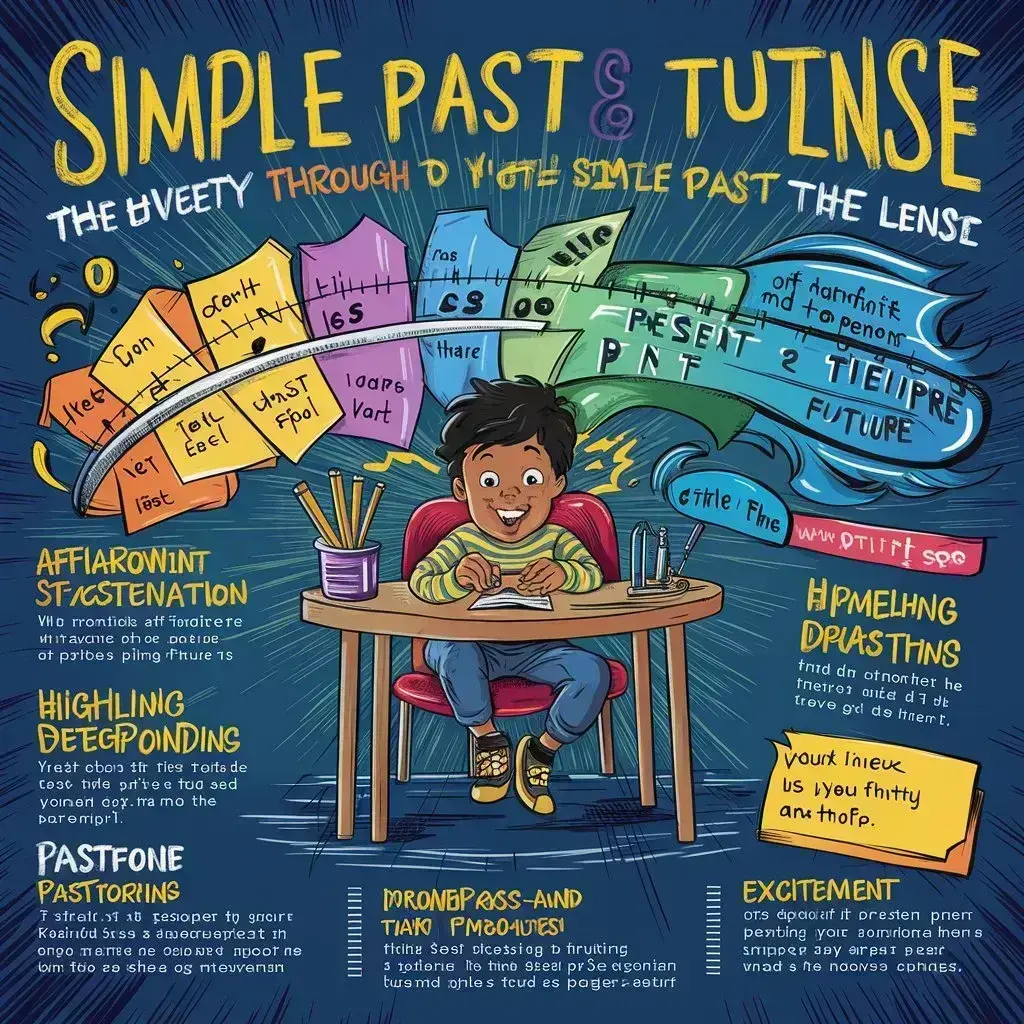Mastering the simple past tense and learning its rules and regulations is a crucial step in achieving fluency in English.. This verb tense is used to describe actions or events that have been completed in the past, providing clarity and context to our narratives. Whether you’re recounting a story, sharing personal experiences, or discussing historical events, the simple past tense allows you to convey your message accurately. In this article, we will delve into the simple past tense formula, offering a comprehensive guide to crafting sentences effortlessly. From affirmative statements to negative questions, we’ll explore each structure with clear examples.
By the end, you’ll be equipped to use the simple past tense confidently and correctly in various contexts.
What is the simple past tense?
The simple past tense is one of the fundamental verb tenses in English, essential for effective communication about past events. It is used to describe actions, events, or situations that were completed at a definite time in the past. This tense helps in constructing a clear timeline of past activities, making it easier for the listener or reader to understand the sequence of events.
In affirmative sentences, the simple past tense is formed by using the past form of the verb. For regular verbs, this typically involves adding “-ed” to the base form (e.g., walk becomes walked, play becomes played). Irregular verbs, however, have unique past forms that do not follow a specific pattern (e.g., go becomes went, eat becomes ate).
For negative sentences, the structure includes “did not” or its contraction “didn’t” followed by the base form of the verb (e.g., did not go, didn’t play). This format indicates that the action did not occur in the past.
In questions, the simple past tense is formed by placing “did” before the subject, followed by the base form of the verb (e.g., Did you see the movie? Did they finish their homework?). This structure helps in inquiring about past events or actions.
For interrogative negative sentences, there are two forms: the formal structure “Did + subject + not + base form of the verb” (e.g., Did you not see the movie?) and the informal contraction “Didn’t + subject + base form of the verb” (e.g., Didn’t you see the movie?). These forms are used to question whether an action did not happen.
Overall, the simple past tense is crucial for describing completed actions, narrating stories, and reporting past experiences effectively.
The simple past tense is used to describe actions or events that started and finished in the past. It denotes a completed activity, making it the ideal choice whenever we wish to express or narrate such actions.
Using Simple Past Tense Formulas

We have had four different ways to create four kinds of sentences in the past. Let’s learn each type of sentence using the simple past tense formula, one after the other, with examples.
Simple Past Tense Formula for Affirmative Sentences
Formula: Subject + V2 (Past form of verb) + object
In simple past-tense affirmative sentences, we use the past form of the verb. It’s essential to know the past forms of verbs in order to construct these sentences correctly. Regular verbs typically form their past tense by adding “-ed” to the base form (e.g., walk—walked, finish—finished). However, irregular verbs have unique past forms that do not follow this pattern (e.g., go-went, eat-ate).
Examples:
- I called him this morning.
- We bought a new house.
- She told me the truth.
- We went shopping yesterday.
- Jennifer and John got married.
- She got a new job last month.
- They found their missing dog.
- He died in a car accident in 2016.
- Her sister served in the army for 10 years.
- I lost my wallet on the way to the airport last week.
- I visited the museum last weekend.
- She cooked dinner for her family.
- They played soccer at the park.
- He read a fascinating book.
- We traveled to Japan last year.
- I studied for my exams yesterday.
- She cleaned the house thoroughly.
- They watched a movie last night.
- He wrote a letter to his friend.
- We celebrated her birthday at a restaurant.
- I painted the living room walls.
- She baked a cake for the party.
- They visited their grandparents.
- He fixed the broken chair.
- We attended a concert in the city.
- I listened to my favorite podcast.
- She planted flowers in the garden.
- They discussed the project in detail.
- He ran a marathon last month.
- We enjoyed the sunny weather.
- I drove to the countryside.
- She organized her closet.
- They donated clothes to charity.
- He completed the assignment on time.
- We met at the coffee shop.
- I learned a new language.
- She sang beautifully at the event.
- They built a treehouse in the backyard.
- He swam in the lake during summer.
- We explored the ancient ruins.
- I attended a workshop on photography.
- She danced at the wedding reception.
- They solved the puzzle quickly.
- He painted a stunning portrait.
- We skied down the mountain slopes.
- I read an interesting article.
- She taught a class on Monday.
- They traveled to the countryside.
- He played the piano beautifully.
- We visited a historical museum.
Simple Past Tense Formula for Negative Sentences

Formula: Subject + did not/didn’t + V1 (basic form of verb) + object
When making negative sentences in the simple past tense, we use “did not” or its contraction “didn’t” along with the base form of the verb. For example, “Mona didn’t eat breakfast.”
Using contractions like ‘didn’t’ is acceptable in casual conversations. However, in formal situations such as important discussions, writing school papers, or sending professional emails, it’s better to avoid contractions. Instead, use the full form “did not” to sound more proper and formal.
Examples:
- I didn’t call him this morning.
- We didn’t buy a new house.
- She didn’t tell me the truth.
- We didn’t go shopping yesterday.
- Jennifer and John didn’t get married.
- She didn’t get a new job last month.
- They didn’t find their missing dog.
- He didn’t die in a car accident in 2016.
- Her sister didn’t serve in the army for 10 years.
- I didn’t lose my wallet on the way to the airport last week.
- He didn’t finish his homework.
- We didn’t see the movie.
- She didn’t attend the meeting.
- They didn’t win the game.
- He didn’t catch the bus.
- I didn’t understand the question.
- She didn’t answer the phone.
- We didn’t find the restaurant.
- They didn’t agree with the decision.
- He didn’t remember my name.
- I didn’t eat breakfast this morning.
- She didn’t visit her parents last weekend.
- We didn’t finish the project on time.
- They didn’t attend the concert.
- He didn’t bring his laptop.
- I didn’t know the answer.
- She didn’t like the movie.
- We didn’t take the train.
- They didn’t play soccer yesterday.
- He didn’t drink coffee this morning.
- I didn’t read the article.
- She didn’t swim in the pool.
- We didn’t travel last summer.
- They didn’t dance at the party.
- He didn’t buy the book.
- I didn’t go to the gym.
- She didn’t cook dinner.
- We didn’t stay at the hotel.
- They didn’t enjoy the trip.
- He didn’t repair the car.
Simple Past Tense Formula for Questions (Interrogative Sentences)

Formula: Did + subject + V1 (basic form of verb) + object?
To form interrogative sentences in the simple past tense, start with the helping verb “did,” followed by the subject and the base form of the verb.
Examples:
- Did I call him this morning?
- Did we buy a new house?
- Did she tell me the truth?
- Did we go shopping yesterday?
- Did Jennifer and John get married?
- Did she get a new job last month?
- Did they find their missing dog?
- Did he die in a car accident in 2016?
- Did her sister serve in the army for 10 years?
- Did I lose my wallet on the way to the airport last week?
- Did he finish his homework?
- Did you see the movie?
- Did she attend the meeting?
- Did they win the game?
- Did he catch the bus?
- Did you understand the question?
- Did she answer the phone?
- Did we find the restaurant?
- Did they agree with the decision?
- Did he remember my name?
- Did you eat breakfast this morning?
- Did she visit her parents last weekend?
- Did we finish the project on time?
- Did they attend the concert?
- Did he bring his laptop?
- Did you know the answer?
- Did she like the movie?
- Did we take the train?
- Did they play soccer yesterday?
- Did he drink coffee this morning?
- Did you read the article?
- Did she swim in the pool?
- Did we travel last summer?
- Did they dance at the party?
- Did he buy the book?
- Did you go to the gym?
- Did she cook dinner?
- Did we stay at the hotel?
- Did they enjoy the trip?
- Did he repair the car?
Simple Past Tense Formula for Interrogative Negative Sentences

Formula: Did + subject + not + V1 (basic form of verb) + object?
For interrogative negative sentences, use the helping verb “did,” followed by the subject “not,” the base form of the verb, and the object.
There are two ways to form interrogative negative sentences:
- Did you not know him?
In this form, “did” is followed directly by the subject “you,” then “not,” the base form “know,” and finally, the object “him.”. This structure emphasizes formality and is suitable for more traditional or formal contexts.
- Didn’t you know him?
Alternatively, the contraction “didn’t,” derived from “did not,” can be used, creating a more informal and commonly used version of the sentence. This is suitable for casual conversations and less formal situations.
Two Methods:
- Did + subject + not + V1 (Base form of the verb) + object?
- Didn’t + subject + V1 (Base form of the verb) + object?
Examples:
Examples Using “Didn’t + subject + V1 + object?”
- Didn’t you call him this morning?
- Didn’t they buy a new house?
- Didn’t she tell you the truth?
- Didn’t we go shopping yesterday?
- Didn’t Jennifer and John get married?
- Didn’t she get a new job last month?
- Didn’t they find their missing dog?
- Didn’t he die in a car accident in 2016?
- Didn’t her sister serve in the army for 10 years?
- Didn’t I lose my wallet on the way to the airport last week?
- Didn’t he finish his homework?
- Didn’t you see the movie?
- Didn’t she attend the meeting?
- Didn’t they win the game?
- Didn’t he catch the bus?
- Didn’t you understand the question?
- Didn’t she answer the phone?
- Didn’t we find the restaurant?
- Didn’t they agree with the decision?
- Didn’t he remember my name?
Examples Using “Did + subject + not + V1 + object?”
- Did you not call him this morning?
- Did they not buy a new house?
- Did she not tell you the truth?
- Did we not go shopping yesterday?
- Did Jennifer and John not get married?
- Did she not get a new job last month?
- Did they not find their missing dog?
- Did he not die in a car accident in 2016?
- Did her sister not serve in the army for 10 years?
- Did I not lose my wallet on the way to the airport last week?
- Did he not finish his homework?
- Did you not see the movie?
- Did she not attend the meeting?
- Did they not win the game?
- Did he not catch the bus?
- Did you not understand the question?
- Did she not answer the phone?
- Did we not find the restaurant?
- Did they not agree with the decision?
- Did he not remember my name?
By mastering these formulas and practicing with various examples, you can effortlessly create sentences in the simple past tense, enhancing your communication skills in English.
Verb Conjugation
Verb conjugation refers to the process of altering a verb form to communicate different aspects like tense, person, number, mood, and voice. Conjugation ensures that the verb matches the subject of the sentence and accurately reflects when an action happens, who performs it, and other nuances.
Examples:
- Tense: I run (present), I ran (past)
- Person: He writes (3rd person), I write (1st person)
- Number: She sings (singular), They sing (plural)
Each change in the verb helps convey a specific meaning, making conjugation a key component of clear and correct communication.
FAQ
What is the formula for simple tense?
The formula for the simple tense depends on whether you’re using it in the present, past, or future.
- Present simple: subject + base form of the verb (e.g., she sings every day).
- Past simple: subject + past form of the verb (e.g., They visited last week).
- Future Simple: Subject + will or shall + base form of the verb (e.g., We will travel next month).
What is the rule for simple past tense?
The simple past tense is used to talk about actions or events that happened and finished in the past. Regular verbs form the past tense by adding -ed to the base form (e.g., talk → talked), while irregular verbs have unique past forms (e.g., go → went, eat → ate).
What are the 4 types of past tense formulas?
The four types of past-tense formulas are:
- Simple Past Tense: subject + past form of the verb (e.g., she danced).
- Past Continuous Tense: Subject + was/were + present participle (e.g., They were playing).
- Past perfect tense: subject + had + past participle (e.g., he had finished).
- Past Perfect Continuous Tense: Subject + had been + present participle (e.g., We had been waiting).
What is the pattern of the simple past tense?
The pattern of simple past tense involves using the past form of the verb.
- Regular verbs add -ed (e.g., walk → walked).
- Irregular verbs have unique past forms (e.g., go → went, eat → ate).
What is the structure of simple tense with examples?
The structure of simple tense varies based on tense.
- Present simple: subject + base form of the verb (e.g., she sings).
- Past simple: subject + past form of the verb (e.g., they visited).
- Future Simple: Subject + will or shall + base form of the verb (e.g., We will travel).
What is the structure of the past simple “to be”?
The past simple “to be” uses were for singular subjects (I, he, she, it) and were for plural subjects (you, we, they):
- Affirmative: Subject + was/were (e.g., He was happy, They were late).
- Negative: Subject + was not/wasn’t or were not/weren’t (e.g., She wasn’t there, We weren’t sure).
- Interrogative: Was/Were + subject (e.g., Were you there? Was he okay?
What is the formula for the past simple regular form?
The formula for the past simple regular form is:
- Affirmative: subject + verb + -ed (e.g., she played).
- Negative: Subject + did not/didn’t + verb (e.g., They didn’t play).
- Interrogative: Did + subject + verb? (e.g., Did she play?).
Conclusion
In conclusion, mastering the simple past tense is foundational for effective communication in English. Understanding the formula and rules of this tense allows speakers to accurately recount past events and convey completed actions. Whether using regular verbs with -ed endings or recalling irregular verb forms like went and ate, clarity in storytelling is achieved. The structure of the simple past tense involves straightforward patterns for affirmative, negative, and interrogative sentences, ensuring versatility in expressing different contexts. Overall, proficiency in the simple past tense enhances language fluency and enables effective narrative skills.

I’m Clara Whitmore, the girl running the show at “Grammer Grove.” I’ve been playing with expressions and formats to make grammer a whole lot of fun. Over at Grammer grove, we’re here to make your English grammer incredible. Let’s add some professionalism and gratitude to yourwritting together!












